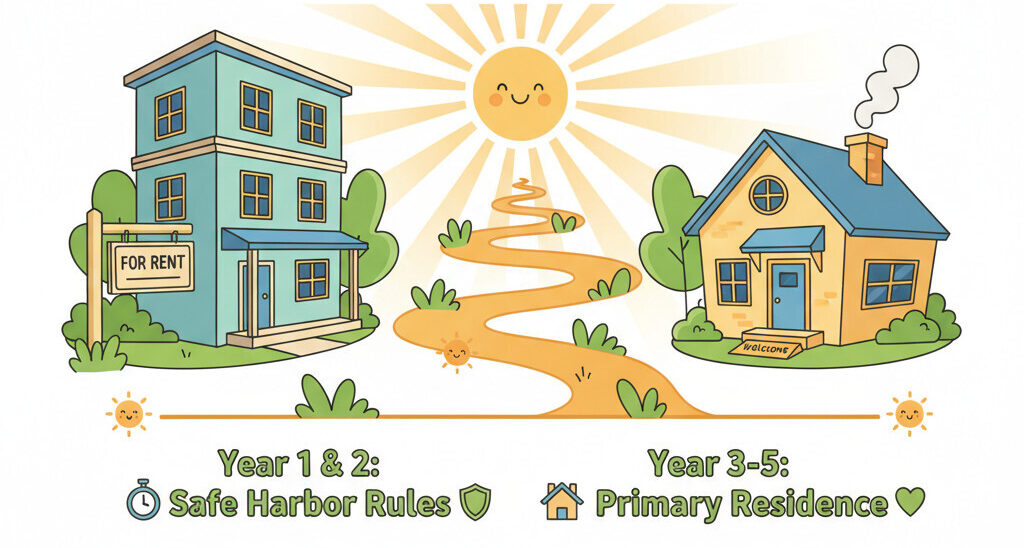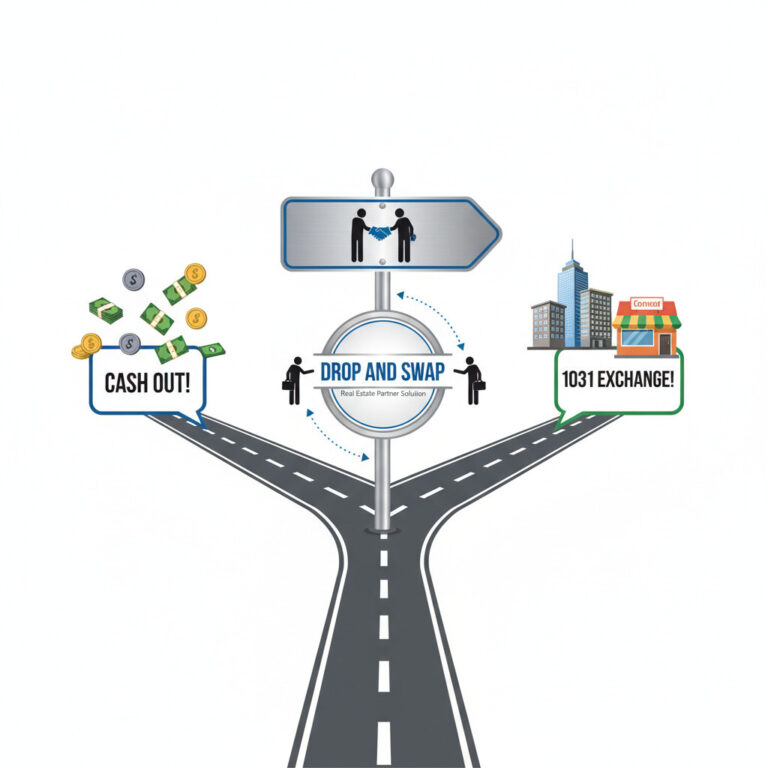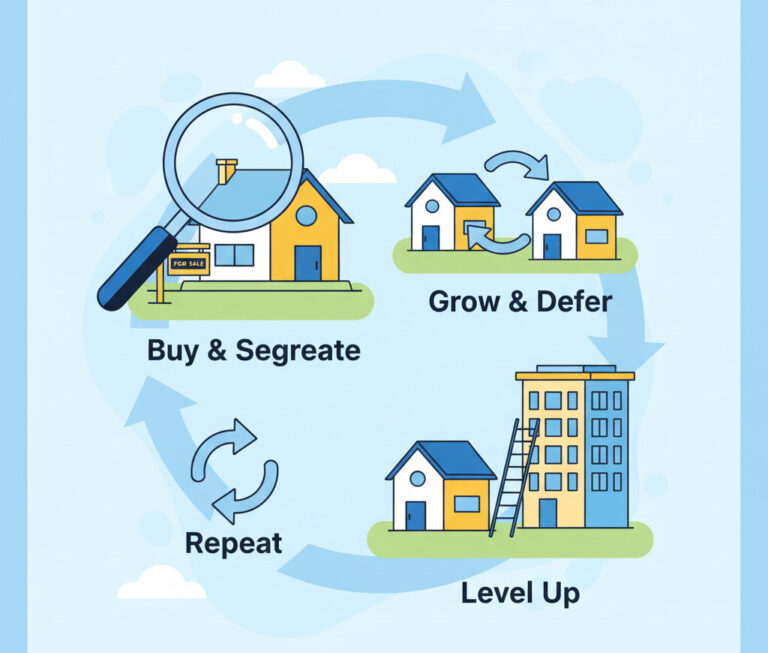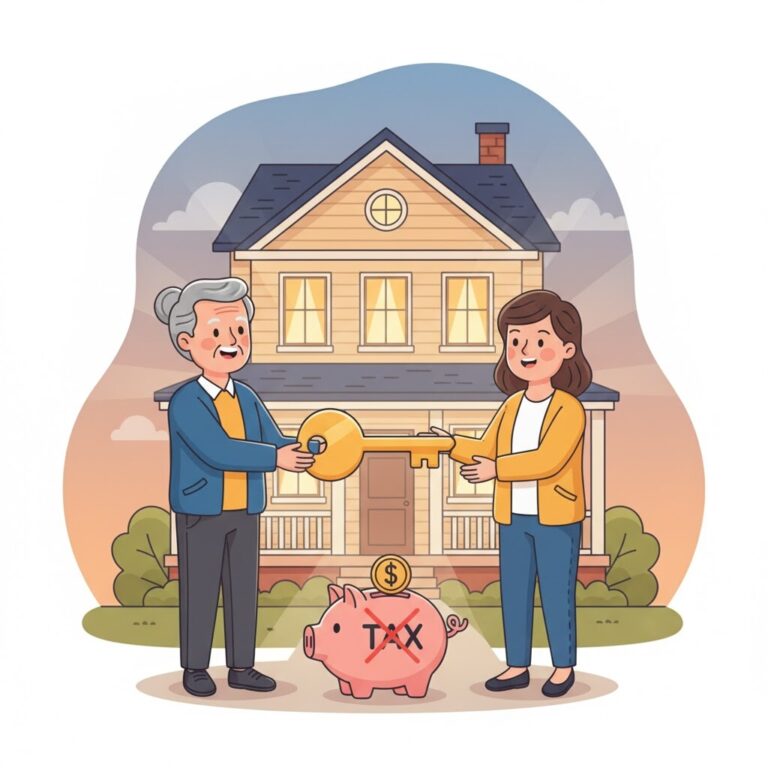How to Convert Your 1031 Exchange Property into Your Primary Residence & Pay ZERO TAX
Ever look at one of your investment properties and think, “I could really see myself living here”? Maybe it’s in the perfect location, or perhaps you’re just ready to downsize from your current home. As a real estate investor, you’ve likely used the powerful 1031 exchange to defer capital gains taxes, but that leaves a huge question hanging in the air: can you actually move into that 1031 property without inviting a massive tax bill from the IRS? It feels like a risky move, but what if I told you there’s a clear, IRS-approved path to do just that? It’s a fantastic strategy, but you’ve got to play by the rules. Let’s dive in and figure it out together! 😊
First, A Quick Refresher: What’s a 1031 Exchange? 🤔
Before we get into the nitty-gritty, let’s make sure we’re on the same page. A 1031 exchange, named after Section 1031 of the U.S. Internal Revenue Code, is a real estate investor’s best friend. In simple terms, it allows you to sell an investment property and roll all the proceeds from that sale into a new “like-kind” investment property. The magic here is that you get to defer paying capital gains taxes on the profit you made.
Imagine you sold a rental property and made a $700,000 profit. Normally, the IRS would want a significant chunk of that gain right away. But with a 1031 exchange, you can reinvest that entire $700,000 into a new property, effectively pushing that tax bill down the road. It’s an incredible tool for building wealth and growing your real estate portfolio without the drag of taxes slowing you down.
The core principle of a 1031 exchange is that you are swapping one investment for another. The IRS allows this tax deferral because, in their eyes, your economic position hasn’t changed—you’re still invested in real estate. The tax isn’t forgiven; it’s just postponed until you eventually sell the new property without doing another exchange.
The First Hurdle: Proving Your “Investment Intent” ⚖️
So, you’ve completed your 1031 exchange and now own a fantastic new property. The thought of moving in is tempting. But hold on! The most critical rule in a 1031 exchange is your intent at the time of purchase. You must acquire the new property with the primary intention of holding it for investment purposes (e.g., for rental income or appreciation).
If the IRS audits you and finds evidence that you planned to make it your personal home from day one, they will invalidate the entire exchange. That means the massive capital gains tax you deferred would become due immediately, along with potential penalties and interest. This is the biggest risk, and it’s where most people get tripped up. So, how do you prove your original intent was legitimate, especially if your plans change later on?
Proving intent can be tricky. The IRS looks at the “facts and circumstances” surrounding your case. This can be a stressful, gray area. You’d have to build a case showing you advertised it for rent, had a legitimate change in life circumstances (like a job relocation), etc. Honestly, it’s not a path you want to go down if you can avoid it.
The Clear Path: The IRS Safe Harbor Rules 📜
Thankfully, the IRS knows that the “facts and circumstances” test is vague. To provide clarity for taxpayers, they created a set of guidelines called a “safe harbor.” Think of this as the official IRS playbook. If you follow these rules to the letter, the IRS will not challenge your investment intent for the property.
This is, without a doubt, the safest and most recommended way to proceed. Here are the specific requirements outlined in Revenue Procedure 2008-16:
IRS Safe Harbor Checklist
| Rule | Requirement | Details |
|---|---|---|
| 1. Holding Period | You must own the property for at least 24 months after acquiring it. | This is a firm two-year period to establish long-term investment intent. |
| 2. Rental Period | In each of those two 12-month periods, you must rent the property out at a fair market value for at least 14 days. | This shows the property is actively being used as a rental. It can’t just sit empty. |
| 3. Personal Use Limit | Your personal use of the property cannot exceed the greater of 14 days or 10% of the total days rented at fair market value during each 12-month period. | This is the trickiest rule. If you rent it for 200 days, your personal use is limited to 20 days (10% of 200). |
By meticulously following these three rules for two full years, you secure your 1031 exchange. After those two years, you are free to convert the property to your primary residence without jeopardizing the tax deferral you worked so hard for.
The Second Big Win: The Primary Residence Exclusion 💰
Okay, so you’ve successfully navigated the first hurdle. You followed the Safe Harbor rules, your 1031 exchange is secure, and you’ve now moved into your property. But the planning doesn’t stop there! Now we set our sights on an even bigger prize: the Section 121 Primary Residence Exclusion.
This is one of the most generous provisions in the entire tax code. It allows you to exclude a massive amount of capital gains from tax when you sell your main home.
- Married couples can exclude up to $500,000 of gain.
- Single individuals can exclude up to $250,000 of gain.
To qualify for this exclusion on a property that started as a 1031 exchange, you must meet two key tests:
- The 5-Year Ownership Test: You must have owned the property for a total of at least 5 years before selling it.
- The 2-Year Use Test: You must have lived in the property as your primary residence for at least 2 of those 5 years (the 24 months do not have to be consecutive).
The Final Calculation: Prorating Your Taxable Gain 🧮
This is where the two strategies truly come together. Because the property was used for both investment (rental) and personal (primary residence) purposes, you can’t exclude the entire gain. The IRS requires you to prorate the gain based on the periods of “non-qualified” (rental) use versus “qualified” (primary residence) use.
📝 Taxable Gain Calculation Formula
Taxable Portion = Total Gain × (Years of Non-Qualified Use / Total Years of Ownership)
Let’s walk through a practical example to make this crystal clear.
Practical Example: Mr. Hong’s 10-Year Plan 📚
The Situation
- Total Ownership Period: 10 years.
- Non-Qualified Use (Rental): 7 years (including the initial 2-year safe harbor period).
- Qualified Use (Primary Residence): 3 years.
- Total Capital Gain on Sale: $1,000,000.
The Calculation Process
1) Determine the Ratio: First, we find the fraction of time the property was a rental. That’s 7 years out of 10 total years, or 7/10 (70%). This is the non-qualified portion.
2) Calculate Taxable Gain: We apply this ratio to the total gain. $1,000,000 (Total Gain) × 70% = $700,000. This is the portion of the gain that is subject to capital gains tax.
3) Calculate Excludable Gain: The remaining portion is the qualified gain. $1,000,000 (Total Gain) × 30% = $300,000. This is the part that is eligible for the primary residence exclusion.
The Final Result
– Final Taxable Gain: $700,000
– Tax-Free Gain: Since the $300,000 eligible portion is less than the $500,000 maximum exclusion (assuming Mr. Hong is married), the entire $300,000 is tax-free! Without this strategy, the entire $1,000,000 gain would have been taxable.
By planning ahead, Mr. Hong successfully deferred taxes with a 1031 exchange and then legally eliminated $300,000 of that tax burden forever. That’s a huge win!
1031 to Home Strategy Summary
Conclusion: A Powerful Two-Part Strategy 📝
Turning an investment property into your dream home is more than just a nice idea—it’s a legitimate and incredibly powerful financial strategy. It requires patience and careful adherence to the rules, but the payoff can be enormous. You’re essentially combining two of the best tax benefits available to property owners: the 1031 exchange and the primary residence exclusion.
Remember the two distinct games you’re playing. First, you secure your 1031 exchange by following the Safe Harbor rules for two years. Then, you play the long game to qualify for the Section 121 exclusion by meeting the ownership and residency requirements. If you do it right, you can build your real estate portfolio, defer taxes, and eventually move into a home while legally eliminating a significant portion of your tax liability. What are your thoughts on this strategy? If you have any questions, feel free to ask in the comments~ 😊






